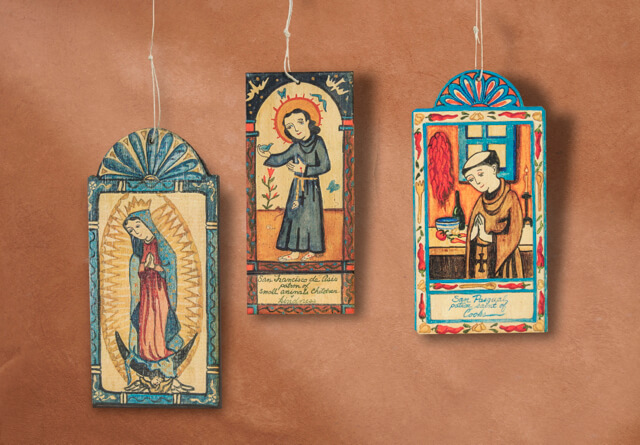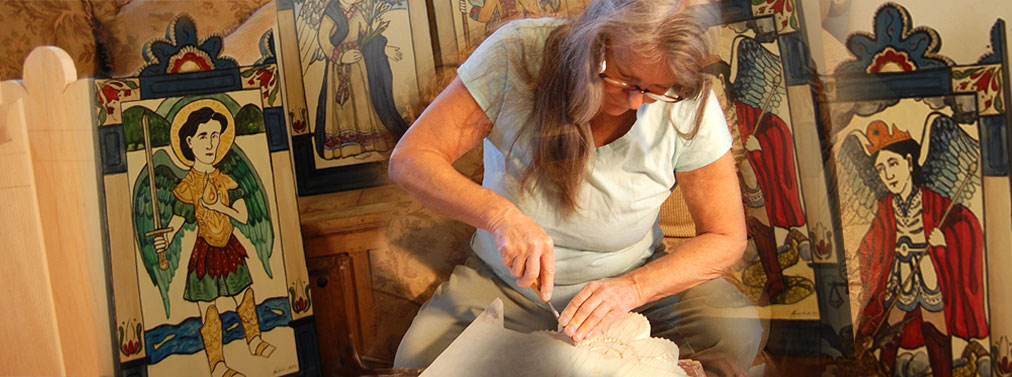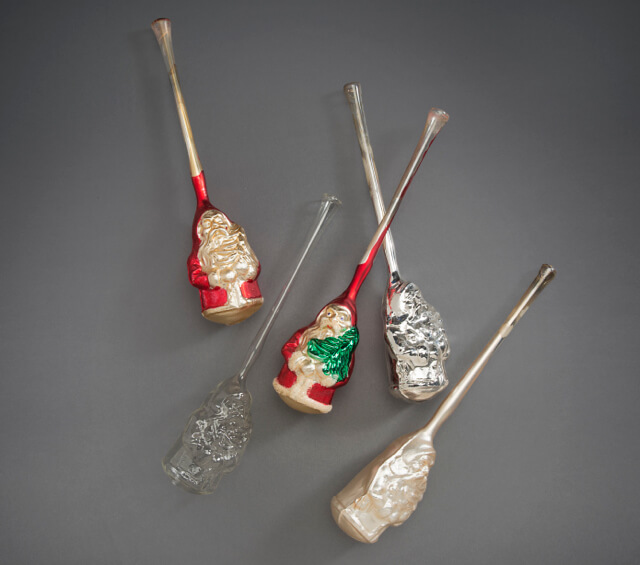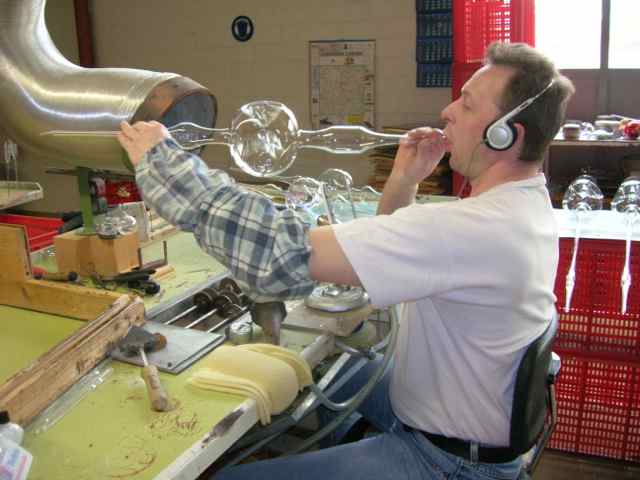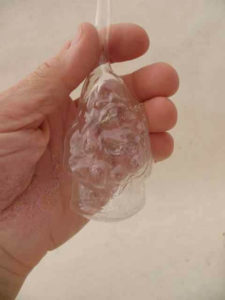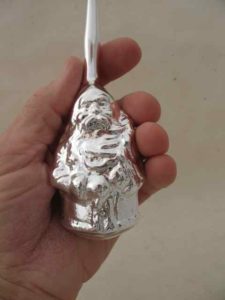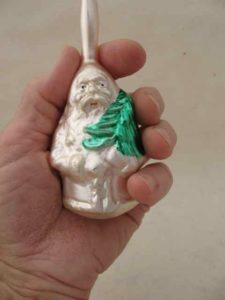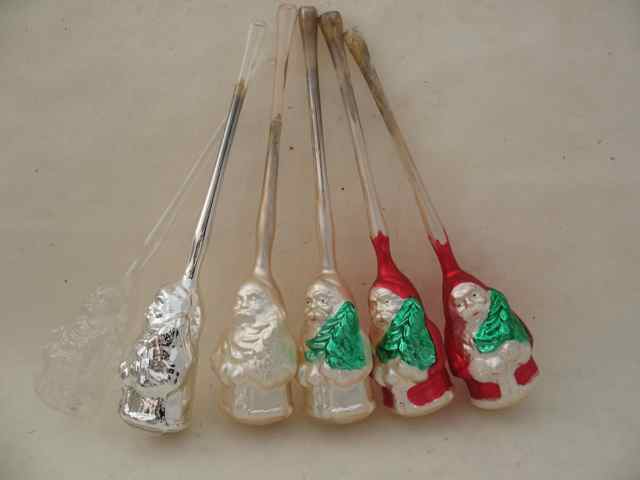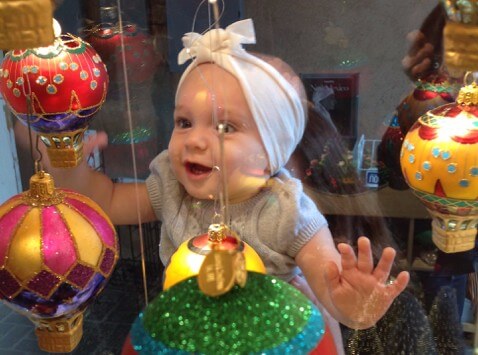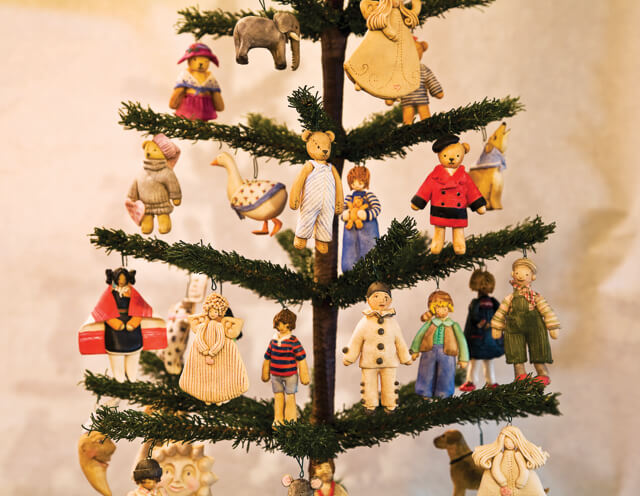Charlie Carrillo is a local santero in Santa Fe, making art in the New Mexico Spanish Colonial Style. He has been a friend of mine for many years. In northern New Mexico, the word santero is understood to mean a person who makes religious images. Charlie once told me that santero is “a made up word”. Don’t look for it in a Spanish dictionary or use it in South America. They will not know what you mean, but in Santa Fe it is a useful word because of Spanish Market on the plaza in late July.
Charlie has a PhD in anthropology. He has written several books, and he has taught most of the artists who currently show at Spanish Market. He and his family have a booth at Spanish Market, usually on the west side of the plaza, opposite the First National Bank.
Charlie Carrillo was recently in a terrible automobile accident. He was a passenger in his car on the Interstate close to Santa Fe at 9:30 in the morning. His wife, Debbie, was driving at a normal highway speed when they were hit from behind at ninety miles an hour. Both cars spun out of control. Charlie’s air bag did not deploy. He broke twenty-three bones, including his back. I learned about the accident from a customer in Michigan (thanks, Kim!) and I immediately went to the hospital to see him. Charlie was cheerful, realistic about his injuries, but confident that he would heal. He soon acquired a body cast and was sent home. A big sign on his front door reads, “Come in please”.
I learned that the driver who hit his car was under-insured. Charlie will not be able to work for months. He will need some money. I thought of a way I could help him. It is related to a long association with this talented man.
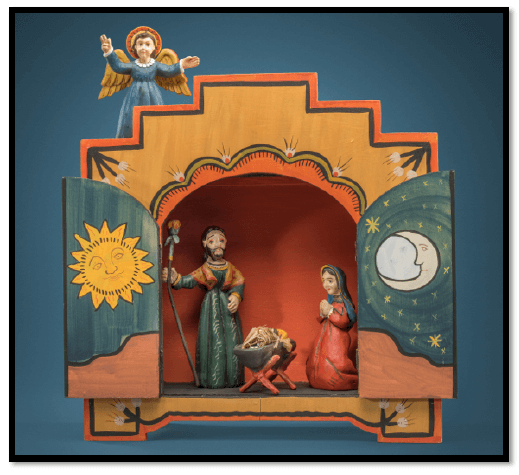
Many years ago, Charlie designed a nativity in a New Mexico Spanish Colonial style. This nativity was reproduced and sold by a national company. It could stand on a shelf or be displayed on a wall.
My shop sold hundreds of these popular reproduction nativities. I remember Charlie kneeling on my living room floor, signing the bottom of the nichos, the wooden cabinets that held the figures. The reproduction nativity was made in the Philippines. They seemed to understand the style because they had also had a Spanish Colonial history. Eventually, the Philippine factory closed and the production was moved to China. When there were problems with the quality of the Chinese work, and when we mentioned these problems, the company simply decided not to make them any more. We could not change their mind. My shop keeps a request list of customers who want to buy one if they are ever available again.
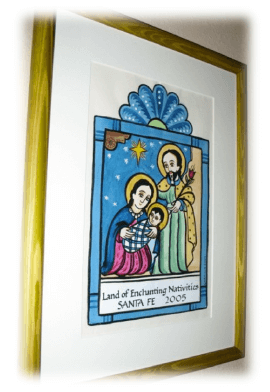 In 2004, I asked Charlie Carrillo to design a logo for the biennial convention I was hosting in Santa Fe in 2005 for Friends of the Creche. This organization is for people who are interested in nativities. Because we were already friends for years, and because the reproduction nativity was still available, Charlie generously created this logo as a watercolor.
In 2004, I asked Charlie Carrillo to design a logo for the biennial convention I was hosting in Santa Fe in 2005 for Friends of the Creche. This organization is for people who are interested in nativities. Because we were already friends for years, and because the reproduction nativity was still available, Charlie generously created this logo as a watercolor.
It is now framed in my house. The calligraphy is by Kathy Chilton. Charlie and Kathy were both speakers at the convention, which I called Land of Enchanting Nativities.
To raise money for Charlie Carrillo in his hour of need, I recently asked Lynn Garlick of Lynn Garlick Retablos in Taos to help, using Charlie’s logo to make an ornament. Lynn makes the many retablo ornaments I sell in my shop.
Then I got Charlie’s written permission to use his image. Michela, my employee who is so talented in computer technology, removed “Santa Fe 2005”, which you can see on the framed original, and improved the quality of the image for reproduction. Lynn produced a retablo ornament at a reduced wholesale price, as her personal contribution to Charlie. It is five inches tall.
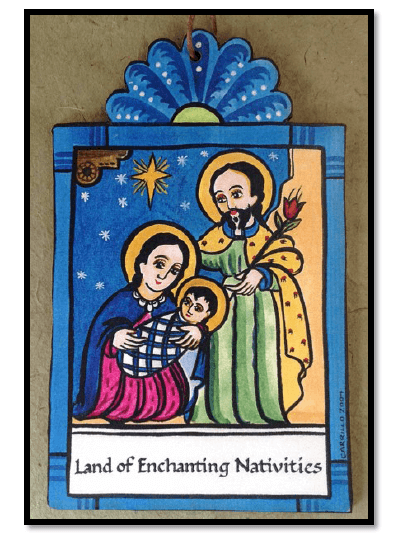
Susan’s Christmas Shop will sell these retablo ornaments for $12 each, and all profit will be donated directly to Charlie. These ornaments are already selling briskly in my shop, but you can now order them on my website or by phone: +1 505 983 2127.
Thank you for reading my appeal to help Charlie Carrillo. I wish you a beautiful spring, wherever you are in this wide world.
Your friend in Santa Fe,
Susan Weber
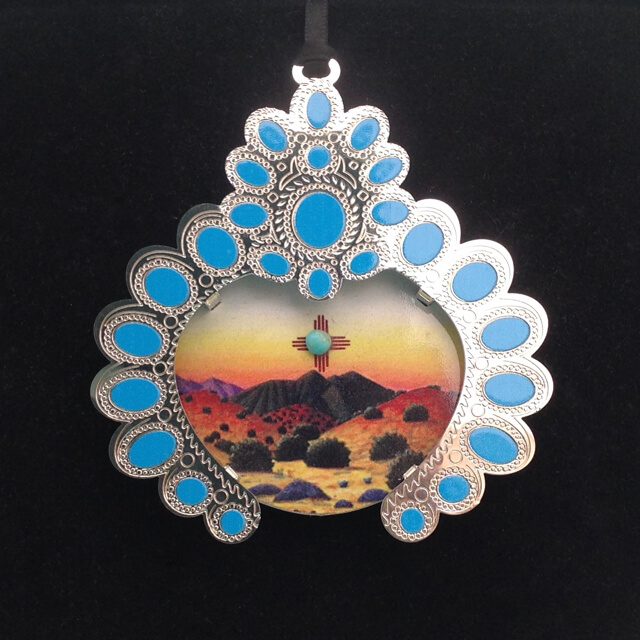

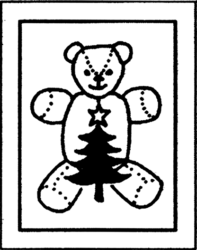

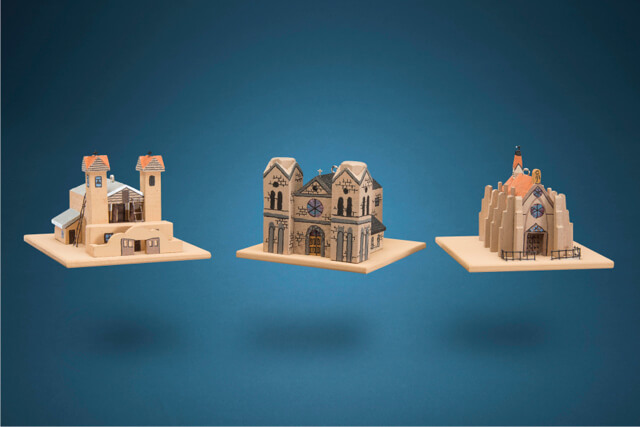
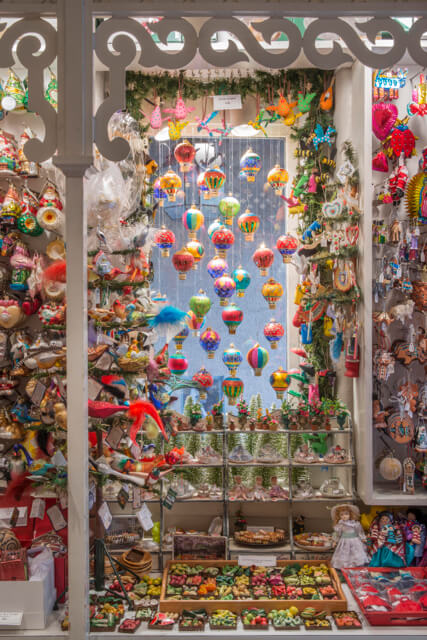
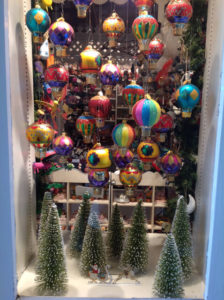
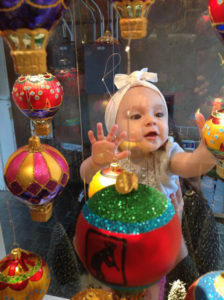
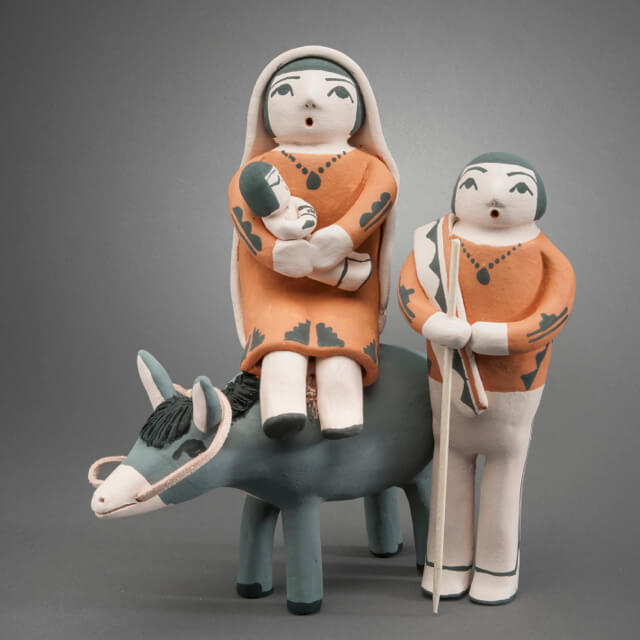

 In 2004, I asked Charlie Carrillo to design a logo for the biennial convention I was hosting in Santa Fe in 2005 for Friends of the Creche. This organization is for people who are interested in nativities. Because we were already friends for years, and because the reproduction nativity was still available, Charlie generously created this logo as a watercolor.
In 2004, I asked Charlie Carrillo to design a logo for the biennial convention I was hosting in Santa Fe in 2005 for Friends of the Creche. This organization is for people who are interested in nativities. Because we were already friends for years, and because the reproduction nativity was still available, Charlie generously created this logo as a watercolor.
